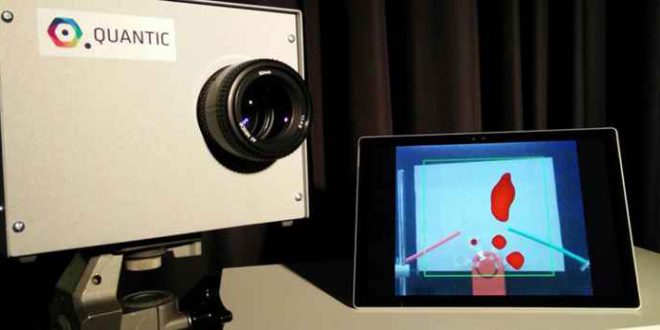Gas imaging technology has been used by the industry for a long time. but the systems in use are expensive and far from energy efficient.
But a paper published by the University of Glasgow’s School of Physics and Astronomy. together with a Scottish photonics company called M Squared Lasers. offers hope of a cheaper. more efficient system. The researchers used a technique called single-pixel imaging to produce real-time video of methane gas in a normal atmospheric setting. Single pixel imaging uses one light-sensitive pixel to build digital images. Current systems use a multi-pixel sensor array. but the one pixel system allows researchers to build smaller. cheaper gas detection systems.
The scene in front of the sensor is illuminated using infrared patterns which are created using a laser tuned to the absorption wavelength of methane. University of Glasgow’s Dr Graham Gibson. lead author of the paper. said: “Our detector allows us to produce images which refresh 25 times a second. equivalent to the standard frame rate of video. which provides a highly accurate real-time picture of the scene in front of the detector.“
The aim of the collaboration between the University of Glasgow and M Squared Lasers is to bring a whole rage on new sensing technologies into the market. a move that would be of interest to the whole oil and gas industry. “Working with M Squared Lasers. with the support of QuantIC. has been of immense benefit to the project. M Squared’s advanced laser systems allowed us to effectively ‘tune in’ to the wavelength of methane gas. and opens up the possibility of using the system to detect other types of gases in the future.“ Dr Gibson said.
Methane gas is a potent greenhouse gas. and any cheaper way of detecting it would help oil and gas companies meet mandate to reduce methane emissions all over the world. In 2016 Canada. the U.S.. and Mexico agreed to cut methane emissions by 40-45 percent by 2025. although the U.S. has since indicated it will pull out of the deal. The global gas sensors market is expected to reach $2.5 billion by 2020. according to research from Radiant Insights.

 Iran Energy News Oil, Gas, Petrochemical and Energy Field Specialized Channel
Iran Energy News Oil, Gas, Petrochemical and Energy Field Specialized Channel



